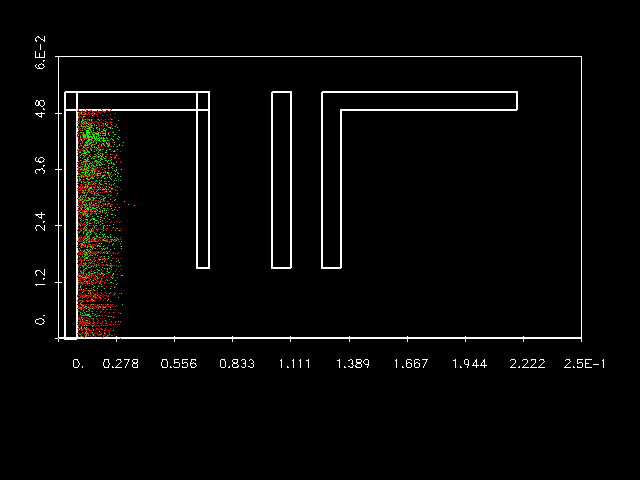
Go to 130 mA and 25 mA animations.
As the extraction hole is 1.5 cm in radius and the emitter electrode is 5.0 cm in radius, around 500 mA should be extracted.
Each images shown corresponds to about 50 ns of beam time.
We firstly see the the final ion beam extracted as a reasonably low divergence beam. This is due to the low space-charge that is it present at early times.
As the time continues the space-charge builds up and the plasma pushes further into the extraction region, producing a field distrribution which is far from a linear lens approximation. At this point the aberrations become high and the field distrubution defocus the ion beam. A highly divergent highly aberrated beam is then seen.
Many problems exist in this simulation. Apart from the uncertainty on many input parameters, we see some streaming of the ion flow in the plasma. Also the ions are being deflected in the plasma, which should be free of fields.
Below the animation, the phase-space diagram for after the extraction region is shown. The beam is clearly very highly aberrated and produces a very large emittance. The hole in the beam at the source exit seen at the end of the animation is shown on this phase-space diagram.

| back to home... | prepared by Richard Scrivens | 21st January 1998 |